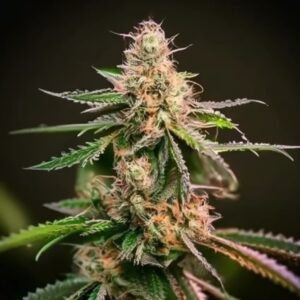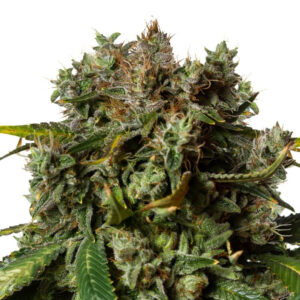Introduction: Waiting for the perfect time to harvest your marijuana plants can be an exhilarating yet challenging task. As a dedicated grower, you have patiently nurtured your plants, aiming for the highest quality buds. Now, the moment you’ve been eagerly anticipating has arrived: harvest time. The timing of this crucial step is paramount for achieving potent cultivation. Harvesting too early can result in reduced potency and yields, while harvesting too late can lead to diminished THC production and resin gland activity.
Trichomes, those tiny crystal-like structures found on the flowering tops of marijuana plants, play a significant role in determining the ideal time for harvesting. These resinous glands contain THC and other psychoactive cannabinoids, making them essential for achieving the desired effects. By closely observing the pistils, growers can assess the plant’s readiness for harvest. Trichomes progress through distinct stages, each offering valuable insights into the plant’s cannabinoid profile.
Trichomes undergo three main stages of development:
clear, cloudy/milky, and amber/brown. In the initial stage, the trichomes are clear, indicating that the cannabinoids present are still in their precursor form. These clear pistils do not possess psychoactive properties, and harvesting during this phase would result in a lack of desired effects. Therefore, it is crucial to exercise patience and allow the trichomes to mature further.
As the plant progresses toward maturity, the trichomes enter the cloudy or milky stage. This is the optimal time for harvest as the pistils are fully packed with THC goodness. They appear opaque or creamy under magnification, indicating the peak THC potency. Harvesting during this stage ensures a potent and enjoyable experience for consumers. It’s important to note that not all trichomes will reach this stage simultaneously since they continue to form and mature at different rates.
The final stage of trichome development is characterized by amber or brown-colored trichomes. At this point, the THC within the pistils begins to degrade, converting into cannabinol (CBN), which has more sedative effects. While it’s acceptable to have some amber trichomes during harvest, waiting too long may result in an excess of CBN and a loss of the desired psychoactive effects. Therefore, it’s crucial to monitor the pistils closely and avoid delaying the harvest beyond the optimal stage.
By observing the trichomes’ appearance and color, growers can make informed decisions about the harvest time, ensuring the desired potency and effects in their final product. The pistils serve as a visual indicator of cannabinoid development, allowing growers to maximize the potential of their plants. Combining trichome observation with other visual cues, such as pistil examination, overall plant maturity, and sensory evaluation of smell and flavor, provides a comprehensive approach to determining the ideal harvest window.
Ultimately, mastering the art of trichome observation is a valuable skill for any marijuana grower. It allows for precise timing, ensuring the best possible outcome in terms of potency, flavor, and overall quality. Paying close attention to the trichomes’ progression and understanding their significance empowers growers to take full control of their harvest and deliver a satisfying experience to consumers.
Stage 1: Clear Trichomes: In the initial phase, trichomes are clear and contain precursor cannabinoids. At this stage, the cannabinoids are not yet psychoactive, and harvesting during this period will not yield the desired effects. It’s crucial to exercise patience and wait for the pistils to mature further.
Stage 2: Cloudy or Milky Trichomes: During the second phase, the pistils transition to a cloudy or milky appearance. This is the ideal time for harvesting, as the pistils are fully loaded with THC goodness. The cloudy/milky trichomes indicate that the THC has reached its peak potency. Growers should aim to harvest when the majority of the pistils have reached this stage. It’s important to note that not all trichomes will be milky simultaneously because they continue to form and mature over time.
Stage 3: Amber Trichomes: The final stage occurs when the trichomes turn brownish or amber. This change indicates THC degradation and the conversion of THC into cannabinol (CBN). While it’s acceptable to have some amber pistils at the start of harvest, waiting too long will result in an excess of CBN, which produces a sedative effect rather than a true high. Therefore, it’s crucial to monitor closely and avoid delaying the harvest beyond the optimal stage.
Harvesting Strategies: Determining the right time to harvest involves a combination of trichome observation and plant maturity assessment. While trichomes provide valuable information about THC development, other visual cues can help confirm the plant’s readiness for harvest. Here are some strategies for optimizing your harvesting process:
Conclusion: Harvesting marijuana plants at the optimal time is crucial for achieving potent and high-quality buds. By utilizing trichomes as indicators, growers can make informed decisions regarding the harvest. Remember to monitor the pistils closely, aiming for the cloudy or milky stage while avoiding excessive amber trichomes. Combine trichome inspection with other visual cues and sensory evaluation to ensure a successful and rewarding harvest. Your patience and attention to detail will be rewarded with a bountiful yield of flavorful and potent buds.













Related Posts

You know what trichomes are, right? It’s the little things that sit on top of the trichomes. There are many cannabinoids in these small trichomes, such as THC and CBD. If you make weed small in your grinder, then a kind of weed dust remains behind, at the very bottom of your grinder? That is called kief, and it consists of a lot of those little trichomes.

Sure, the cultivation of cannabis, especially in the pursuit of resinous, high-quality buds, is an art that requires precision, patience, and passion. The Amsterdam weed culture, famed for its high-quality strains, is a testament to the commitment and meticulous attention to detail that growers devote to their plants. One of the most crucial aspects of cannabis cultivation is maximizing trichome…

Unlocking the Secrets: Trichome Color, Clarity, and Maximizing the Desired Effects of Cannabis
In this article you will find answers to following questions: what is trichome color?, why is trichome clarity important?, how can you unlock secrets hidden within trichomes?, what factors are involved in the decision-making process?, what are some desired effects of cannabis?, what are some hidden secrets…